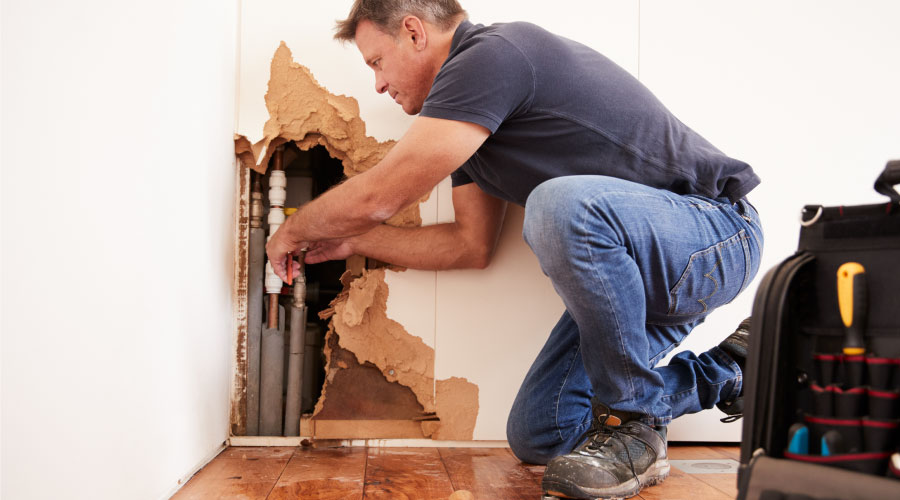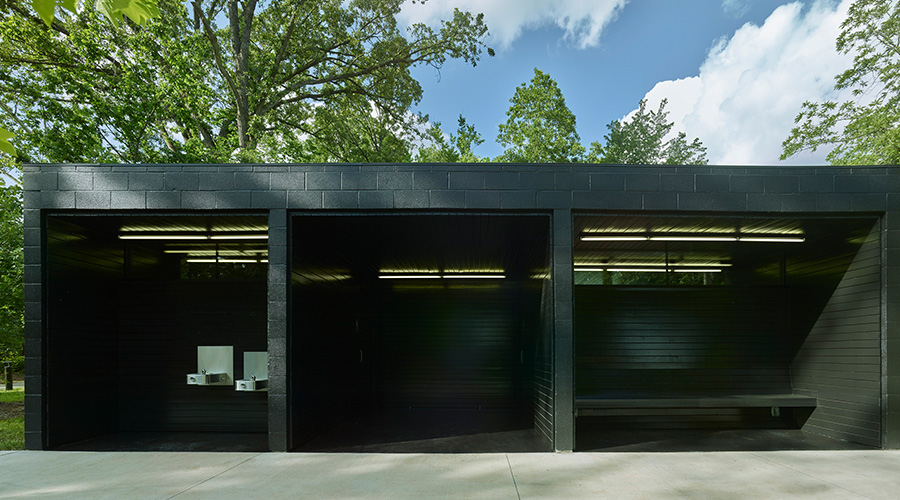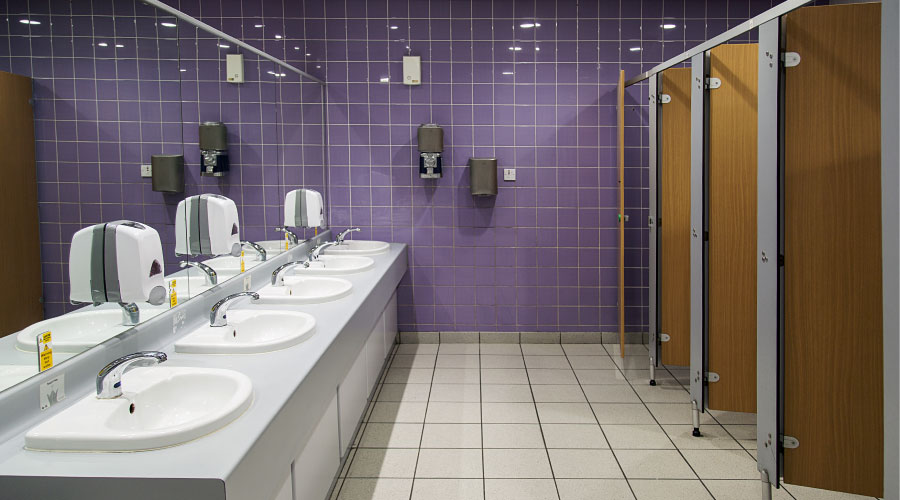Plumbing by the Book
Possible changes in plumbing codes offer managers opportunities to revisit key considerations on product specification and installation
Change is in the wind for the nation’s plumbing codes. In September 2005, the International Association of Plumbing and Mechanical Officials (IAPMO) and the International Code Council (ICC) announced plans to determine if the two organizations can agree on the essential elements needed to create a joint plumbing and mechanical code for the nation.
The effort could result in joint venture to update the Uniform Plumbing Code, the Uniform Mechanical Code, the International Plumbing Code and International Mechanical Code to produce a joint code in the respective subject areas.
The possibility of such code changes offer managers a good opportunity to revisit specification and installation considerations related to plumbing products to ensure not only solid performance, but also compliance with applicable codes.
Plumbing products have undergone extensive changes in recent years, largely in response to user demands for longer performance life and more water savings. But managers making product decisions also must take code compliance into consideration. A closer look at product and project considerations can help managers put the pieces together more cost-effectively.
Product Considerations
The 1992 National Energy Policy Act set standards for restroom water-using fixtures. It set maximum flow rates for new fixtures at 2.5 gallons per minute (gpm) for faucets, 1.5 gpm for showerheads, 1.6 gallons per flush for toilets, and 1 gallon per flush for urinals.
Some early models offered a compromise between performance and low water-use levels. This compromise resulted in the common belief that low-flow fixtures required users to flush twice. Some models did have problems, but the problems have been resolved in later generations of low-flow fixtures.
Now, all new construction and renovation projects must use low-flow fixtures. Managers also should look to upgrade older restrooms with the low-flow fixtures just to save water. The average service life for most restroom fixtures 20 years, so it makes sense to replace these fixtures with low-flow units.
Traditionally, buildings have been designed with central, domestic water heating systems. Centrally located heaters generate the hot water, which is piped to all areas that need hot water. In larger facilities, circulation pumps help reduce the wait time for hot water. Perhaps the most significant problem with these systems is heat losses through piping, valves and other components.
These systems also can waste large amounts of water. Users must run the water for several seconds before receiving hot water. In many cases, more water is wasted while waiting for it to become hot than is actually needed once it is hot. This wastes water, and it wastes the energy to heat the water.
An alternative to the central-system approach is the point-of-use water heater, which use several small water heaters located where water is used. Each individual heater is sized to meet the requirements of that location and placed as close as possible to minimize both water and energy losses. By minimizing the water loss waiting for hot water to reach the user, these systems offer greatly reduced water use rates, as well as improved energy efficiency.
The most significant drawback of point-of-use systems is increased maintenance requirements. While the units are low maintenance, their use simply means there are more components that maintenance personnel must check and maintain regularly. More maintenance might be required, but the use of point-of-use water heaters eliminates a major maintenance problem found with all central systems, in that the loss of one component will not eliminate hot water to the entire facility.
Waterless urinals are the latest products that aim to reduce water use in restrooms. Traditional systems use a water seal to prevent odors from escaping into the restroom. Waterless urinals use disposable cartridges filled with a sealing liquid and, as a result, require no water to operate.
By eliminating valves, sensors and water, these urinals also eliminate problems associated with urinal overflow, splashing and vandalism. Replacing the cartridge every six months is the only required service.
The amount of water facilities can save depends on the application. For example, some users in schools have estimated that each installed waterless urinal saves 10,000-40,000 gallons of water annually.
Facilities most often have installed waterless urinals in new construction projects and restroom renovations. Workers can retrofit the urinals into existing restrooms, but they might face problems created by differences in the height of the existing piping and the piping for the waterless unit.
Trouble Spots
Areas of plumbing systems to which managers should pay the closest attention in planning renovations and retrofits are sprinkler-system runs, piping runs, restrooms, mechanical rooms, mechanical systems, boiler rooms, pump rooms, and air-compressor rooms. The following components most often demonstrate early warning signs:
Water piping. The appearance of corrosion on water-piping joints might indicate a pH below 7.0 or that dissimilar metals have been joined improperly. Rust stains on steel pipes or blue-green copper oxide corrosion stains on copper pipes might be the only indication of a problem if the leak is very small.
Fixtures. Blockages in plumbing fixtures such as sinks and toilets are relatively common. But in most cases, they can be removed quickly without causing further problems. Discolored plumbing fixtures — an indication of rust or other waterborne minerals — might mean there is a need for a water-treatment or water-filtration program. If drains are noisy or slow to empty, this might indicate that fixture traps need to be emptied or replaced.
Equipment and components. Water-heating equipment such as boiler piping, condensate-return lines, and hot-water equipment are potential trouble spots. A decline in water quality, such as discoloration or the presence of sediment, often indicates a problem with the water-supply source.
Pipe valves. Ball valves, gate valves and check valves that are improperly installed or subject to prolonged low pH will show corrosion and, in many cases, can fail.
Making Renovations Work
A plumbing-system upgrade is an ideal time to consider the additional opportunities they create to benefit the organization. Among the components of restroom and plumbing-systems upgrades that can deliver additional benefits are these:
-
Use non-potable, or gray, water for landscaping instead of discharging it to the sewer.
-
Correctly size hot-water heaters to new, lower water-use rates.
-
Investigate grant opportunities using the upgrade site as a demonstration site.
-
Use a commissioning agent during design, construction, startup and acceptance of new installations.
-
Standardize plumbing fixtures to limit brands and parts.
-
Specify automatic controls on sinks, toilets, urinals and dryers.
-
Install occupancy and photocell sensors for light controls.
-
Monitor water and energy use versus set points that are verified with sub-metering and data logging.
As discussions continue over the future of the nation’s plumbing codes, managers would be wise to monitor the negotiations and deliberations, especially how any code changes would affect plans for renovations and retrofits. The efficiency of plumbing and piping systems is essential, both to ensure smooth facility operations and to help organizations control costs related to water consumption.
Spotlight: IAPMO
The International Association of Plumbing and Mechanical Officials (IAPMO) is an organization dedicated to the protection of the public’s health and safety through the development and maintenance of the Uniform Plumbing CodeTM (UPCTM) and the Uniform Mechanical CodeTM (UMCTM).
IAPMO is a membership association serving industry, government, consumers and other parties within and outside the United States. In addition to promulgating industrial education seminars and certification programs, IAPMO is a leading developer of standards, codes, product testing and certification, with goals to enhance public safety and health.
For more information, visit www.iapmo.org.
|
Related Topics:











